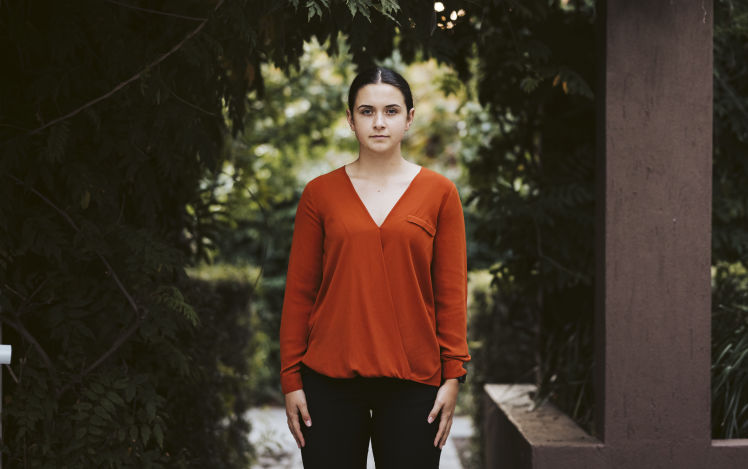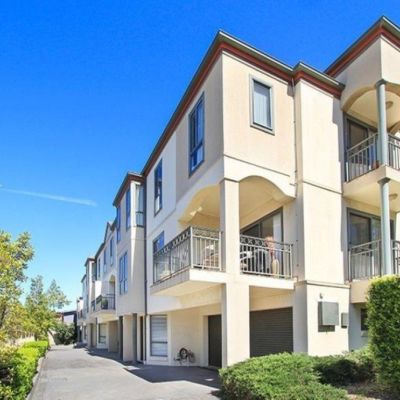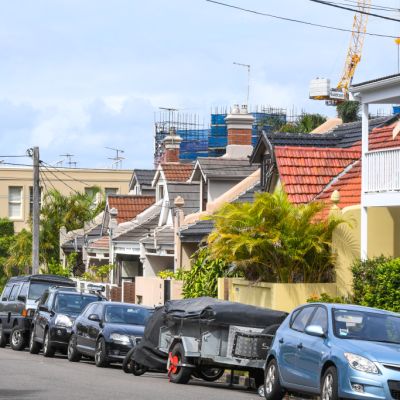Canberra house and unit rents hit record high, still the most expensive city in the nation: Domain rent report

Canberra tenants are feeling the pinch when hunting for a new rental property, with house and unit rents at record highs and the capital remaining the most expensive in which to rent, new data shows.
According to the latest Domain Rent Report for the March quarter 2021, released on Thursday, the median asking rent for a unit reached a record high of $500 per week, up 1 per cent over the quarter and 4.2 per cent year-on-year.
“This has pushed the price gap further from Sydney, with Canberra unit rents now $30 more than renting a unit in Sydney,” said Domain senior research analyst Nicola Powell.
“It is also $50 a week more expensive to rent a house in Canberra than the next most expensive cities, Sydney and Darwin.”
HOUSES | MEDIAN RENTAL ASKING PRICE
Capital City
Mar-21
Dec-20
Mar-20
QoQ
YoY
Sydney
$550
$550
$530
0.0%
3.8%
Melbourne
$430
$440
$440
-2.3%
-2.3%
Brisbane
$440
$425
$410
3.5%
7.3%
Adelaide
$425
$410
$395
3.7%
7.6%
Perth
$430
$415
$375
3.6%
14.7%
Canberra
$600
$600
$580
0.0%
3.4%
Darwin
$550
$550
$480
0.0%
14.6%
Hobart
$480
$460
$470
4.3%
2.1%
National
$471
$468
$453
0.6%
4.0%
The median asking rent for houses in the capital remained at its peak of $600 per week, a figure that remained unchanged over the quarter but increased by 3.4 per cent year-on-year.
“Tenants have been operating in a landlords’ market for some time, and landlords are likely to have become accustomed to the fierce competition to secure a lease,” Dr Powell said.
The city’s low rental vacancy rate at just 0.7 per cent in March has driven rental prices upwards, Dr Powell added.
UNITS | MEDIAN RENTAL ASKING PRICE
Capital City
Mar-21
Dec-20
Mar-20
QoQ
YoY
Sydney
$470
$470
$520
0.0%
-9.6%
Melbourne
$375
$385
$430
-2.6%
-12.8%
Brisbane
$400
$400
$385
0.0%
3.9%
Adelaide
$350
$340
$320
2.9%
9.4%
Perth
$365
$350
$320
4.3%
14.1%
Canberra
$500
$495
$480
1.0%
4.2%
Darwin
$430
$420
$380
2.4%
13.2%
Hobart
$420
$400
$420
5.0%
0.0%
National
$429
$431
$467
-0.4%
-8.1%
“Tenants will find the task of securing a lease harder, as the estimated number of vacant rentals continues to decline, 14 per cent lower than last year,” she said.
 Vacancy rates: March 2021
Vacancy rates: March 2021 The cost of renting a house in Australia is now more expensive than ever
The cost of renting a house in Australia is now more expensive than ever Sydney house rents at record high, unit rents stabilising after COVID price declines
Sydney house rents at record high, unit rents stabilising after COVID price declines Melbourne set to become the cheapest city in which to rent a home: Domain Rent Report
Melbourne set to become the cheapest city in which to rent a home: Domain Rent Report The cost of renting in Brisbane reaches record levels, outstrips Melbourne prices
The cost of renting in Brisbane reaches record levels, outstrips Melbourne prices
Inner North resident Victoria Marriott knew first-hand how competitive Canberra’s rental market was after attending more than 30 open for inspections and applying for more than 15 properties.
“My partner and I began looking three months before we had to vacate our previous property [in March]. At first, I thought this would be ample time to find a new rental. I was wrong,” Ms Marriott said.
“I went to multiple weekday [and weekend] inspections that were flooded with interested parties. After we were turned back from property after property, I began to take days off work to go to inspections.”
Ms Marriott was searching for a one-bedroom unit, granny flat or townhouse around the Woden Valley region with one to two car spaces and ample off-street parking for up to $500 per week.

In some applications, Ms Marriott offered more than $20 than the advertised price in hopes her application would be considered; she even pushed her budget up to $600 per week “to see if we could break out of what seemed to be the most sought-after budget for rentals”.
She eventually found a unit in the Inner North in March right on her budget of $420 per week.
“It was the first property that accepted our application … and thankfully, we didn’t have to offer more than the advertised asking price,” she said.
According to the latest figures, the median asking rent for a unit in the Inner North increased by 2 per cent over the quarter and year to $510 per week.
UNITS | MEDIAN RENTAL ASKING PRICE
Region
Property
Mar-21
Dec-20
Mar-20
QoQ
YoY
Belconnen
Unit
$460
$450
$450
2.2%
2.2%
Gungahlin
Unit
$460
$450
$450
2.2%
2.2%
Molonglo
Unit
$483
$488
$460
-1.0%
4.9%
North Canberra
Unit
$510
$500
$500
2.0%
2.0%
South Canberra
Unit
$530
$530
$530
0.0%
0.0%
Tuggeranong
Unit
$460
$450
$450
2.2%
2.2%
Weston Creek
Unit
$495
$450
$450
10.0%
10.0%
Woden Valley
Unit
$460
$450
$420
2.2%
9.5%
Independent Property Management general manager Grace Hooper said apartments in the Inner North were hard hit during the pandemic but had bounced back from what was a “difficult year”.
“This time last year, at the height of the pandemic we saw a lot of apartments in the Inner North area, particularly Braddon, sell,” she said.
“Now that has really turned around and we’ve seen a big difference there. Rental properties are now going very quickly and the market has tightened once again.”
Units in Weston Creek recorded the strongest median asking rent growth of 10 per cent over the quarter and year to $495 per week.
As for houses, most regions saw an increase in median asking rents with slights falls in Woden Valley over the year and the Inner South over the quarter.
HOUSES | MEDIAN RENTAL ASKING PRICE
Region
Property
Mar-21
Dec-20
Mar-20
QoQ
YoY
Belconnen
House
$550
$540
$530
1.9%
3.8%
Gungahlin
House
$585
$570
$580
2.6%
0.9%
Molonglo
House
$645
$630
$610
2.4%
5.7%
North Canberra
House
$670
$650
$650
3.1%
3.1%
South Canberra
House
$795
$800
$750
-0.6%
6.0%
Tuggeranong
House
$560
$550
$520
1.8%
7.7%
Weston Creek
House
$590
$570
$570
3.5%
3.5%
Woden Valley
House
$628
$620
$630
1.2%
-0.4%
“These price drops are very marginal … and what that shows is the rental conditions across all of our districts are tight, which is why we’re seeing prices rise,” Dr Powell said.
Houses in Tuggeranong had the strongest growth over the year with median asking rents increasing by 7 per cent to $560 per week; and houses in Weston Creek had the strongest growth over the quarter with median asking rents up 3.5 per cent to $590 per week.
“The March quarter is when we’d usually see international students come to Canberra but that has now been replaced by people moving to the ACT from interstate for work, particularly in the public service sector and the Australian Federal Police,” Ms Hooper said.
“There’s a major supply and demand issue in Canberra. While we have so many prospective tenants, we don’t have enough stock to cater to that and the last three months has definitely been one of our busiest periods.”
Ms Hooper expects the demand to continue into winter, however, stock levels may still linger at a relatively low level.
We recommend
We thought you might like
States
Capital Cities
Capital Cities - Rentals
Popular Areas
Allhomes
More







